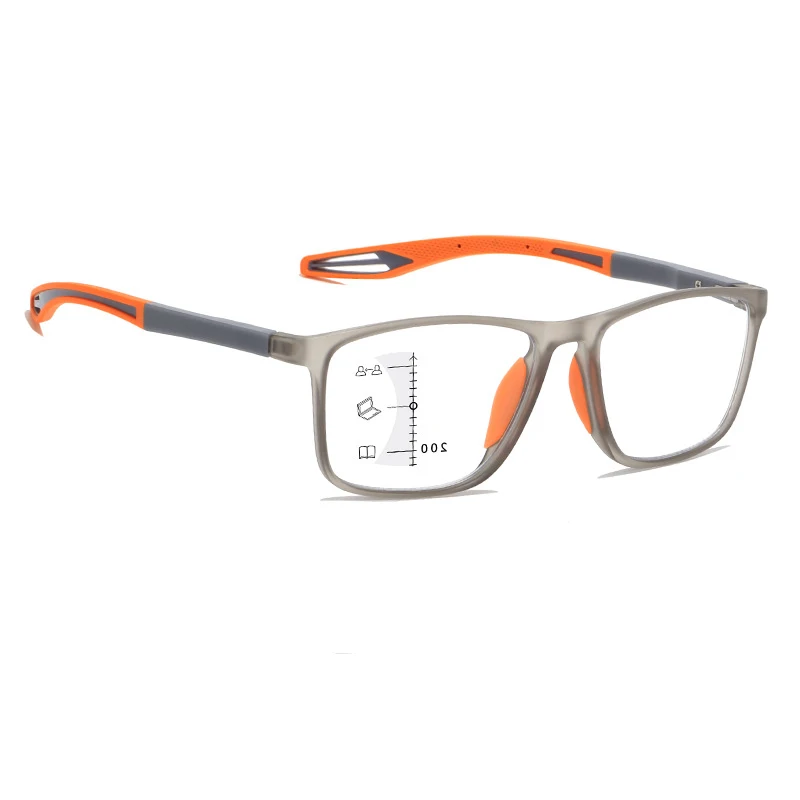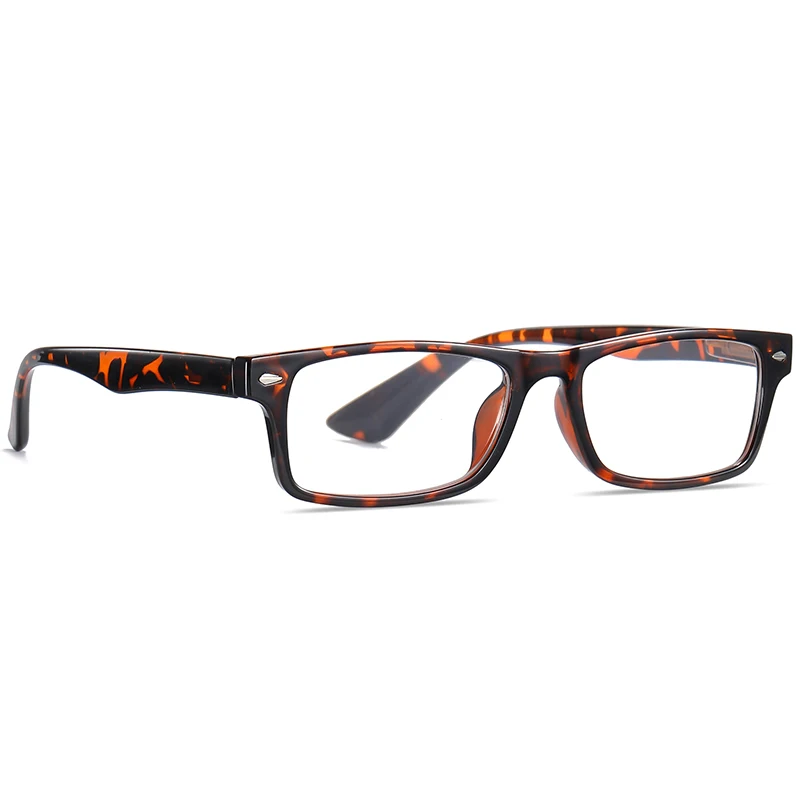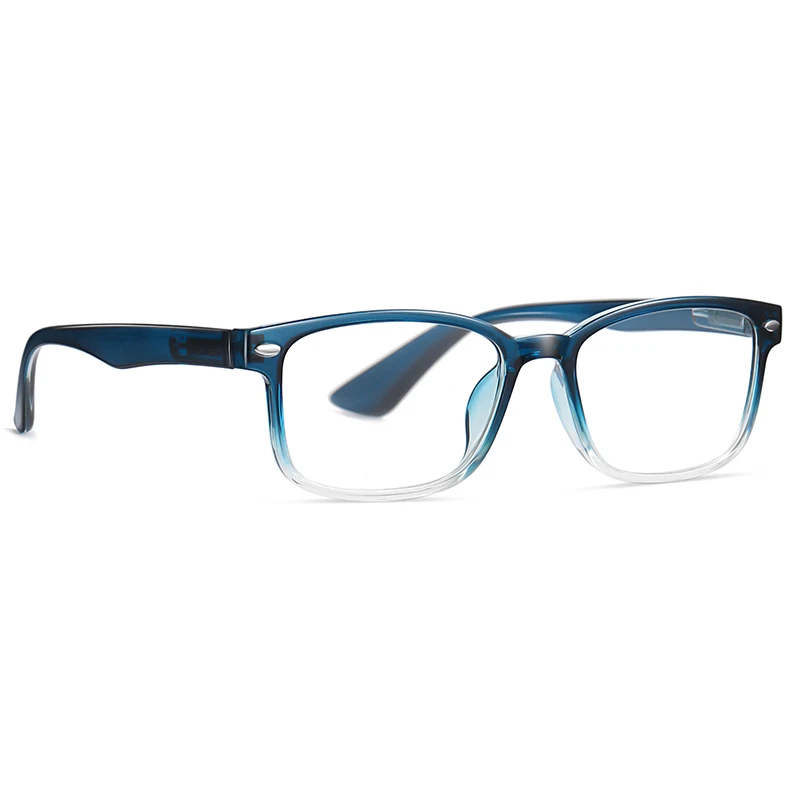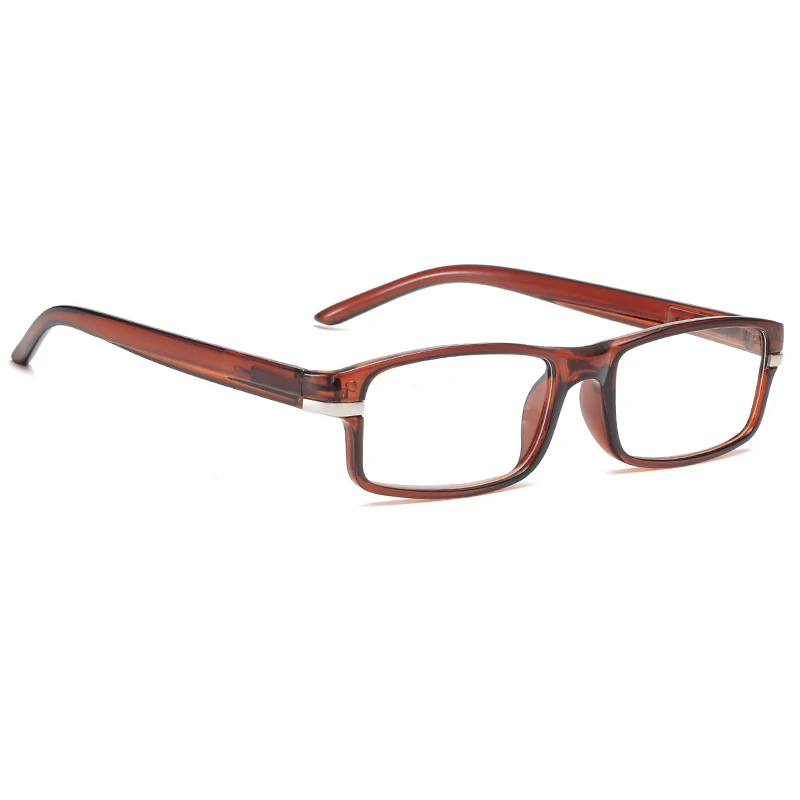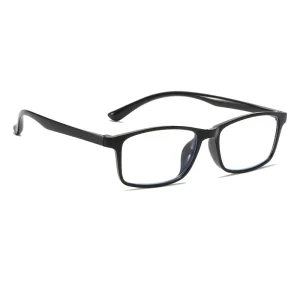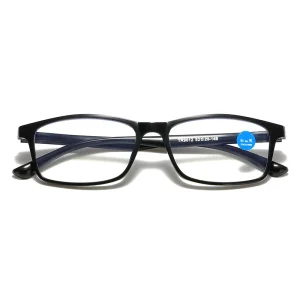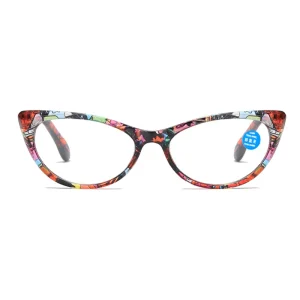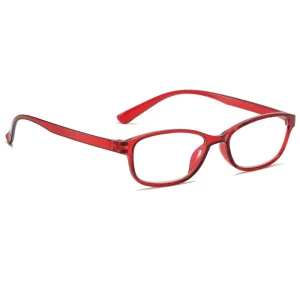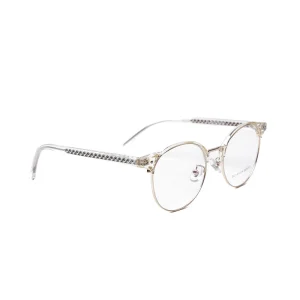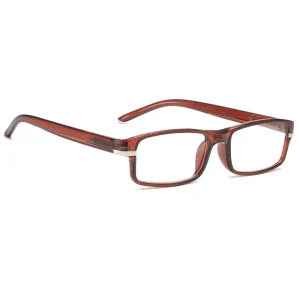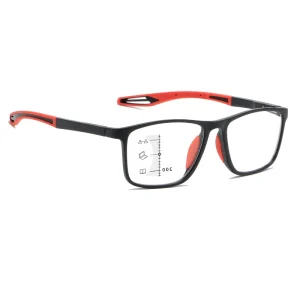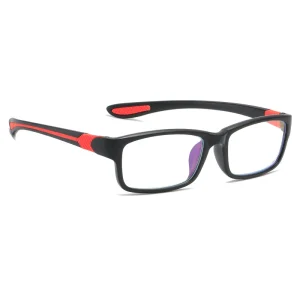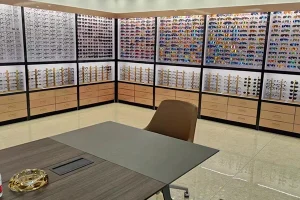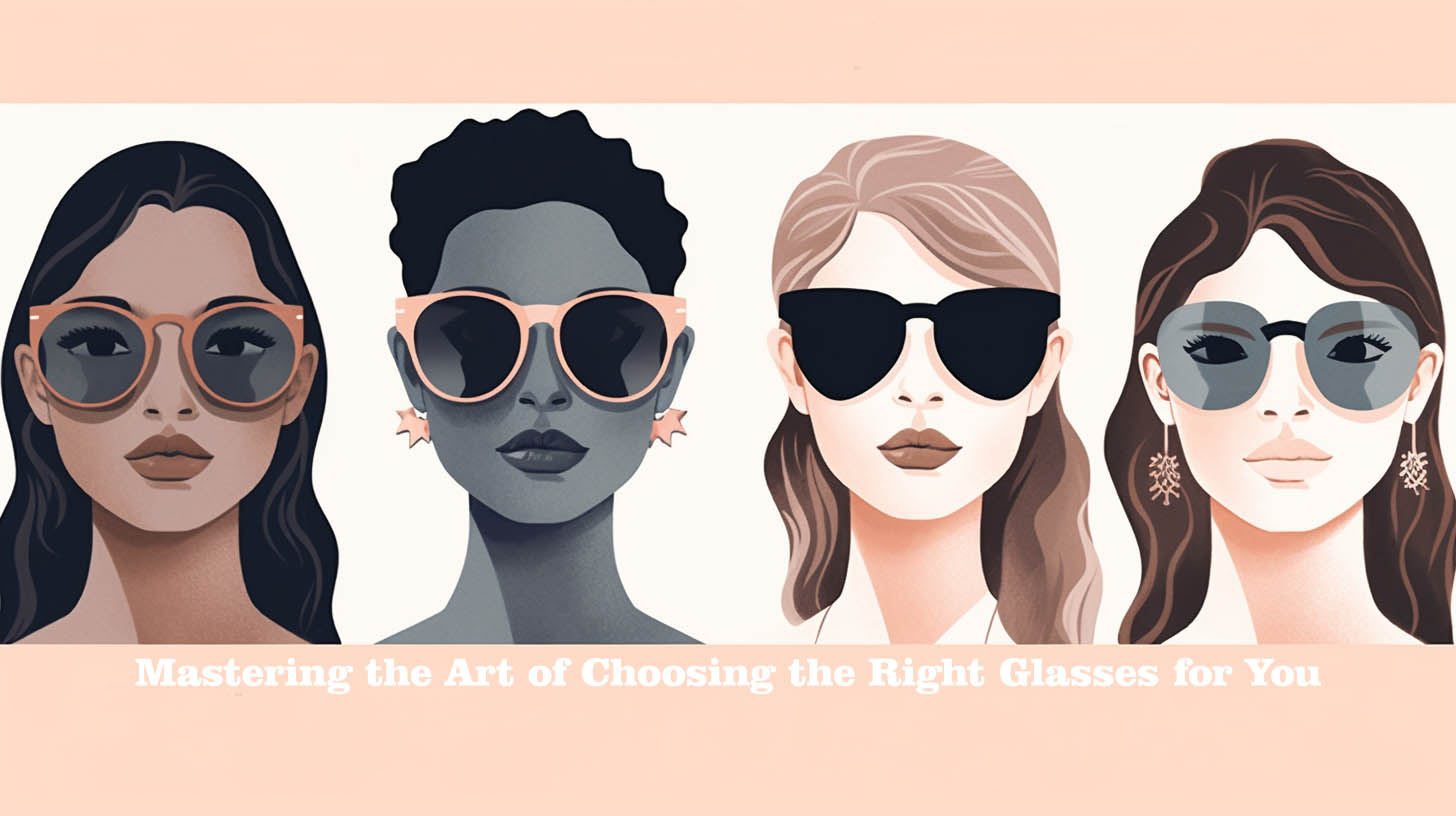Our 1.0 reading glasses spectacles are designed to protect your eyes from harmful blue light emissions. If you work constantly in an office at a computer screen you are vulnerable to the effects of this bad blue light daily, this can oftern cause headaches and sore eyes. These readers are constructed with special blue filter lenses which reduce eye strain and cut down the problems associated with working in front of screens for long periods. They are also perfect for screen reading at night.
Rhaegal is one of a reading glasses manufacturer and supplier in China. Our wide range of models covers all your applications. We understand the importance of customization, so we offer exceptional OEM services with excellent quality. At Rhaegal, we strive to provide reading glasses that are tailored to your needs.
+ 1.0 Reading Glasses Wholesale
Reader Glasses
Polycarbonate Frame
Anti Blue Light
+1.0 Reading Glasses
Light weight 22g
Get a free quoteSport Reading Glasses
Ultra Soft Anti Slip Silicone Temple
Anti Blue Light
+1.0 Reading Glasses
Light weight 20g
Get a free quoteReading Glasses
Polycarbonate Frame
Anti Blue-Ray
+1.0 Reading Glasses
Light weight 19g
Get a free quoteSports Reading Glasses
Ultra Soft Anti Slip Silicone Temple
Anti Blue Light
+1.0 Reading Glasses
Light weight 21g
Get a free quotePresbyopic Glasses
Polycarbonate Frame
Anti Blue Light
+1.0 Reading Glasses
Light weight 19g
Retro Reading Glasses
Polycarbonate Frame
Anti Blue Light
+1.0 Reading Glasses
Light weight 17g
Get a free quoteRhaegal – Designer Reading Glasses
In the wholesale manufacturing sector, our factory produces custom reading glasses renowned for their unparalleled designs and meticulously selected materials, including TR90, polycarbonate, magnesium, aluminum, titanium, and stainless steel. We imbue each eyewear creation with consummate artistry, ensuring a standard of excellence and efficacy. Our glasses prioritize intricacy, embodying not only visual appeal but also a focus on creating a comfortable and satisfying fit to ensure maximum wearer satisfaction. Our product range covers a wide variety of styles and sizes to cater to diverse preferences and inclinations.
Within our establishment, the calibration of lens prescriptions for custom reading glasses is meticulously undertaken by experienced optometrists, tailored to individual visual requirements. We are dedicated to providing the most professional service, diligently meeting the customized needs of our customers with keenness and compassion, a commitment of which we are proud. Additionally, our wholesale pricing structure is designed to make our outstanding reading glasses accessible to a broad spectrum of consumers.
Inquiry Now Click me!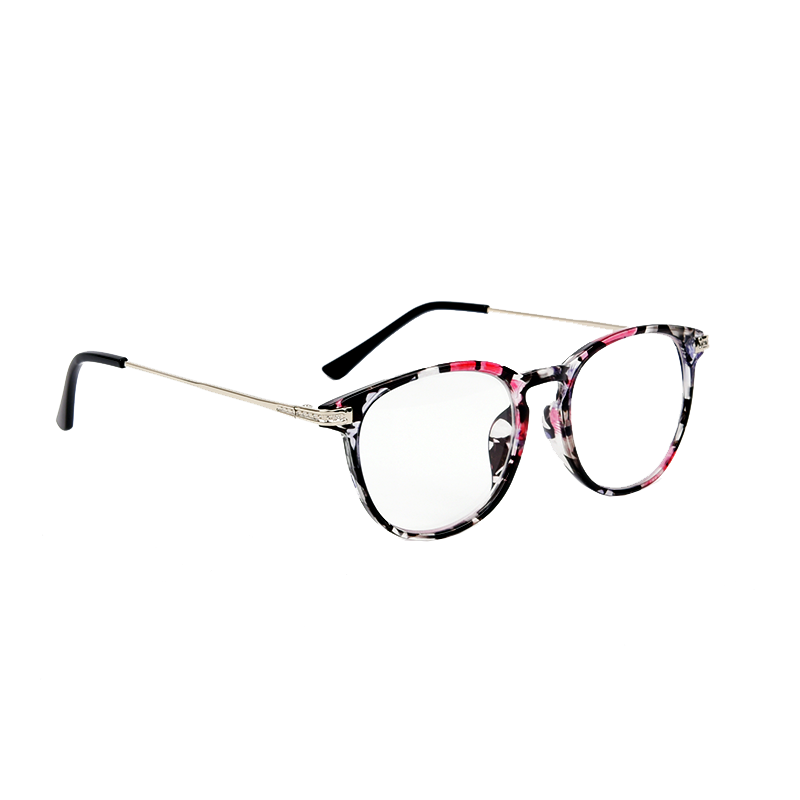
Latest Best Reading Glasses Wholesale
Why Choose Us as Eyeglasses Supplier

Easy to Start
Low MOQ will help you start wholesale eyeglasses with low risk and costs to test quality and your market.

Custom Order
Unique design, special flexible materials and brand custom your logo on eyeglasses are accepted.

Customer Support
Our dedicated 24/7 customer support team is committed to delivering an exceptional customer service experience.

Certificate
CE, FDA approved, freely wholesale eyewear from Rhaegal and resell them in your market without any worries.
Why You Might Need Reading Glasses
Understanding Your Reading Glasses Lens Power
A prescription for reading spectacles, while bearing a semblance to its general eyewear counterpart, is distinguished primarily by its sphere (SPH) notation, invariably accompanied by the affirmative plus symbol (+). This typographical marker heralds the lens’s purpose: augmenting the focal prowess of your eyes when engaged with the world immediately before you.
Casting our gaze upon the numerical figures ensconced after the plus, these units—termed diopters—chronicle the magnitude of visual correction each lens offers. The array of reading glasses available off-the-shelf, for instance, those perched on the aisles of a local pharmacy, span from a modest +1.00 D to a more robust +3.50 D. Ascending in quarter-diopter steps (+0.25 D), they provide a gradation of choices albeit within a finite spectrum.
It is not without merit to consider the standard offerings; however, precision—a virtue in the realm of ocular enhancement—beckons the possibility of commencing at the most gentle correction of +0.25 D and ascending to loftier strengths as dictated by necessity.
In the pursuit of such exactitude, Rhaegal presents a formidable arsenal ranging mightily from the aforementioned +0.25 D to an impressive +4.00 D. Within this expansive breadth lies the potential for a meticulous match, tailored to the precise degree of correction your vision dictates. As the numerical value etched upon your prescription mounts, so too does the potency of your lenses, directly corresponding to the rigorous demands of your eyes’ refractive needs.
Eyeglasses Manufacturer and Eyewear Supplier – Complete FAQ Guide
1.0 reading glasses” refers to reading glasses that have a magnification of +1.00 diopters. This magnification level is generally suitable for individuals who are just starting to experience difficulty with close vision, often due to presbyopia, which is a normal age-related decrease in near focusing ability. The “+1.00” indicates the strength of lens magnification required to improve near vision.
Yes, 1.0 diopter reading glasses can be used for computer work for some individuals, particularly if the monitor is positioned at a typical reading distance. However, whether they are suitable for you depends on how they affect your vision and comfort when looking at the screen. Here’s what to consider:
Distance: Computer screens are often placed farther away than a typical reading distance. Reading glasses are optimized for closer distances, so 1.0 diopter glasses may not provide the best focus for mid-range distances like a computer screen.
Eye Strain: If using 1.0 reading glasses for computer work causes eye strain, headaches, or fatigue, this could indicate that the magnification level isn’t suitable for the distance to your monitor.
Computer Glasses: There are glasses specifically designed for computer work, often referred to as “computer glasses.” These may have a different focal length more suitable for the distance to your computer screen and may include anti-reflective coatings or blue light filtering to reduce eye strain from screen glare.
If you find that using your reading glasses for computer work isn’t comfortable, or if you’re switching frequently between tasks that require seeing different distances, it might be worth discussing your symptoms with an optometrist. They might recommend a customized solution, such as progressive lenses or dedicated computer glasses, to help reduce eye strain and improve visual comfort.
No, +1.00 reading glasses are not suitable for all individuals with difficulty in close vision. The appropriate strength for reading glasses varies depending on the level of correction an individual needs for their specific near vision problem.
Presbyopia, which typically starts to occur around the age of 40, affects people differently and progresses at varying rates. People with milder presbyopia might find that +1.00 diopter glasses are adequate for their needs, at least initially. However, as presbyopia advances, they may require stronger magnifications. Others might need a stronger prescription right from the beginning.
It’s important for individuals to consult with an eye care professional to determine the appropriate lens strength for their reading glasses and to ensure there are no other underlying vision problems that might require corrective lenses or treatment. Regular eye examinations are important to address vision changes and eye health.
To determine the correct strength of reading glasses for your needs, you should consider the following steps:
Eye Exam: The most accurate way to determine the proper strength for reading glasses is to have an eye exam conducted by an optometrist or ophthalmologist.
Diopter Test: Many pharmacies and opticians have reading tests available. You can use these tests to read text at different magnification levels to determine which one provides the clearest vision for near tasks.
Trial and Error: You may also try out different strengths of reading glasses available at a store. Start with the lower magnifications and work your way up until you find a pair that allows you to read comfortably.
Printable Eye Chart: There are printable eye charts and diopter tests available online that you can use at home. These tests often come with instructions on how to use them to find the appropriate magnification.
Keep in mind, if you have a significant difference in vision between your eyes or other specific visual needs, off-the-shelf reading glasses might not be ideal. Custom-made readers prescribed by an eye care professional would be more beneficial in such cases. Always consider having regular eye exams, as eyesight can change over time, and using an incorrect prescription may lead to eye strain.
The frequency of eye exams can vary based on your age, health, and the advice of your eye care professional. However, a typical recommendation is:
Adults under 40 with no vision problems or risk factors for eye diseases should have an exam every 5 to 10 years.
Adults between 40 and 54 should consider having an eye exam every 2 to 4 years.
Those aged 55 to 64 should have an eye exam approximately every 1 to 3 years.
For adults 65 and older, an annual eye exam is often advisable.
It’s important to note that if you already wear corrective lenses or if you have risk factors for eye diseases (like diabetes, high blood pressure, family history of eye disease, or a visually demanding job), you should have your eyes examined more frequently. For updating reading glasses prescriptions specifically, an exam every 1 to 2 years, or if you notice a change in your vision, would likely be sufficient. Always follow the advice of your eye care professional.
Local Drugstores or Pharmacies: Many drugstores carry a selection of over-the-counter reading glasses in various strengths, including 1.0 diopters.
Optical Shops: Your local optician’s store will likely have a range of reading glasses, and the staff can be quite helpful in assisting you to select the right pair.
Supermarkets or General Retailers: Large chains often have a section for health aids, including reading glasses.
Wholesaler and Manufacturer – Rhaegal Glasses: Offer high quality reading glasses with wholesale price and fast shipping to worldwide.
Online Retailers: You can find an extensive range of reading glasses on websites like Amazon, eBay, or specialty eyewear retailers. When shopping online, you can often find reviews to help guide your choice.
Department Stores: Many department stores carry reading glasses in their accessories section.
Bookstores: Some bookstores also offer reading glasses since they’re commonly used for reading.
When shopping for reading glasses, it’s important to consider things like the frame’s size and shape and the lens quality. Make sure they are comfortable to wear and that the lenses are clear and free from defects.
Yes, reading glasses with a strength of 1.0 diopter can help reduce eye strain during close-up work for individuals who experience difficulty focusing on nearby objects. This slight magnification is often enough for those who have just started noticing challenges with reading small print or engaging in tasks that require seeing details up close. These glasses make the text or object larger and clearer, thereby reducing the effort your eyes need to make to focus, which can help in minimizing eye strain.
However, it’s essential to ensure the diopter strength matches your needs. If you continue to experience discomfort or strain, you might need a different strength or a comprehensive eye examination by an optometrist to assess your vision and eye health accurately.
No, 1.0 diopter reading glasses are not designed to correct astigmatism. Astigmatism is a refractive error caused by an irregular shape of the cornea or lens in your eye, leading to blurred or distorted vision at all distances. Over-the-counter reading glasses, such as those with a 1.0 diopter strength, typically offer the same magnification across the entire lens and do not correct for the uneven focusing that astigmatism causes.
To properly address astigmatism, prescription lenses that are specifically tailored to correct the unique degree and axis of your astigmatism are required. These lenses might include cylindrical correction to compensate for the irregular curvature of your eye, something that is not provided by generic reading glasses. If you suspect you have astigmatism or if you’re experiencing symptoms such as blurred vision, headaches, or eye strain, it’s important to consult with an eye care professional for a comprehensive eye exam and personalized eyewear recommendations.
While 1.0 diopter reading glasses are designed for close-up tasks, wearing them all day isn’t typically advised unless your activities involve continuous near-vision work and you experience no discomfort. Here are a few points to consider:
Purpose: 1.0 diopter glasses are intended to provide magnification for near tasks like reading, crafting, or other close work. Wearing them when not performing close tasks isn’t necessary and may not be helpful.
Comfort: If you feel comfortable and do not experience any eye strain, headaches, or dizziness while wearing them, you might be able to wear them for longer periods. However, listen to your body and take breaks if needed.
Distance Vision: Since reading glasses blur distance vision, wearing them for walking around, driving, or other distance vision tasks is impractical and unsafe.
Eye Strain: Wearing reading glasses when they’re not needed could lead to eye strain or fatigue. If you notice such symptoms, it’s better to remove them.
Adjusting Habits: If you find you need to wear reading glasses very frequently, it may be worth considering an eye exam to see if a more tailored prescription (such as bifocals or progressives) could benefit your vision needs throughout the day.
In any case, if you have concerns about your vision or eyewear, it’s always a good idea to consult with an eye care professional. They can provide personalized advice based on your specific vision needs.
Men’s and women’s 1.0 diopter reading glasses primarily differ in style, size, and design to accommodate different aesthetic preferences and facial structures. Functionally, both men’s and women’s reading glasses with a diopter strength of 1.0 provide the same level of magnification. Here are some aspects where they may differ:
Frame Size: Men’s frames are often larger and wider to fit larger face shapes, while women’s frames may be smaller.
Style and Color: Women’s reading glasses might come in more varied styles, with decorative elements and a wider range of colors, while men’s styles may be more conservative in design and color choices.
Shape: Frame shapes can vary, with some styles traditionally marketed towards men or women based on popular trends. For instance, cat-eye shapes are commonly associated with women’s eyewear, while aviator styles are often found in men’s glasses.
Fit: Beyond personal style, the fit is also important. The nose bridge, arm length, and width should all be comfortable without pinching or sliding off.
Ultimately, the decision on which reading glasses to choose is based on personal preference and comfort rather than any functional differences in the lenses themselves. It’s helpful to try on several pairs to see which fit and look best on you.


